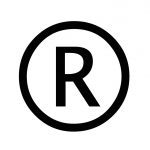Between regular checkups, occasional illnesses, and periods of rehabilitation, medical expenses can quickly add up – even for the healthy individual. This puts a great need for having medical insurance coverage to lighten the burden of these costs, which makes Medicare Plans the savior of the day.
However, Medicare plans don’t cover everything. They come with their own list of good and bad news.

Medicare And Medigap Insurance Plans
The good thing is that there’s a great availability when it comes to medical insurance; Medicare plans cover most of the hospital admissions (Part A) and medical coverage (Part B). Despite this fact, Medicare plans can become costly as a result of the adding up of copayments and deductibles throughout the year. To solve this issue, the Medicare insurance professionals at MedicareWire.com explain that many people seek an additional plan to cover these gaps, Medigap plans. There are 10 different Medigap plans to choose from, but Plan F is everyone’s favorite so far. The bad news is that neither Medicare or Medigap plans cover the costs of prescription drugs (Part D). While healthy individuals may not suffer hugely from lack of Part D coverage, those with chronic illnesses or serious diseases will quickly be overwhelmed by their out-of-pocket expenses.
So, what can they do to get prescription drug coverage?
Medicare Part D: Prescription Drug Coverage
To get prescription drug coverage, patients have two options. They can go for a Medicare Advantage plan instead of their Medicare/Medigap plans; this plan covers Part D. Their other option is to enroll in a Part D drug plan on their own. Either way, they’ll be able to get the prescription drug coverage they need.
How Prescription Drug Coverage Works
According to the 2020 model, there are 4 stages in a Medicare Part D plan.
These stages are:
For starters, the Part D plans have an annual deductible of $435. According to the plan you’re enrolled in, the deductible may be charged in full, or it may be partially or fully covered. After paying the deductible in drug expenses, the initial coverage stage starts.
In the initial coverage stage, your Plan D will kick in to help in covering the expenses, but you’ll still be required to make copayments alongside the plan. The co-payments you make and the percentage of coverage depends on the plan you’re enrolled in. The medications covered are divided into 4 tiers and each plan customizes your co-payments according to the tier of your medications.
The 4 tiers of a plan’s formulary can be divided into the following:
- Tier 1 includes generic drugs, which are also the least expensive. They work just as efficiently as brand-name drugs most of the time, the only differences between them are the lack of patency in generic drugs and that they cost less money.
- Tier 2 includes generic drugs that are more expensive, but they also include some brand-name drugs. The brand-name drugs included are only those deemed as “preferable” by your doctor.
- The drugs included in Tier 3 are brand-name drugs that aren’t preferred nor recommended by your doctor. They’re expensive and will cost you a significant amount of your out-of-pocket payments; they’re usually not covered in Plan D.
- Tier 4 includes the most expensive drugs. These drugs are usually used to treat rare conditions.
Before deciding to buy any drugs, you should confirm with your doctor on whether they’re preferred and if there are any alternatives available. In this stage, the cost of prescription drugs is capped at $4020, which is calculated by combining the amount that you and your company have paid together.
Once you consume the initial coverage, the coverage gap starts. In this stage, you’ll only pay 25% of your medication costs. You’ll stay in this stage until you’ve reached a total cost of $6350 paying for your medications. This amount is only calculated on your own payments; the insurance coverage is not included.
If you’ve reached the limit of your coverage gap, you enter the catastrophic coverage stage in which the insurance company covers 95% of your medication costs.
Medicare plans play a big role in providing medical insurance and the introduction of Medigap plans makes them even more effective. However, as these two plans don’t cover prescription drug costs, patients look for other alternatives; such as Medicare Advantage plans or a stand-alone Plan D insurance. Plan D is divided into 4 stages. The first stage is an annual deductible which, when reached its limit, the plan kicks in with its initial coverage, gap coverage, and, finally, catastrophic coverage.







